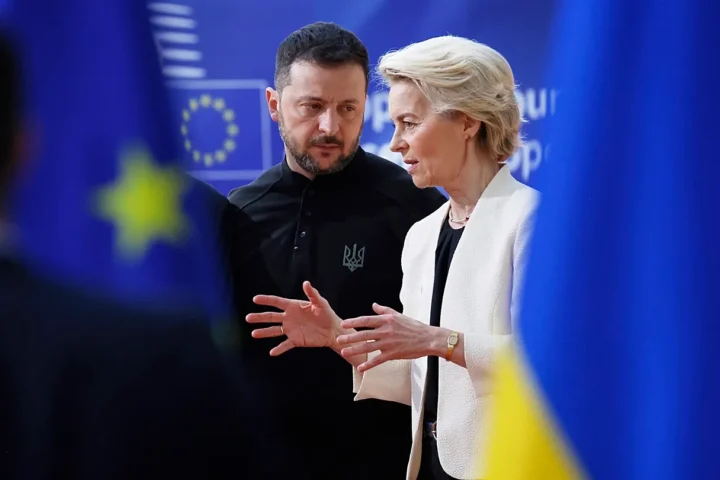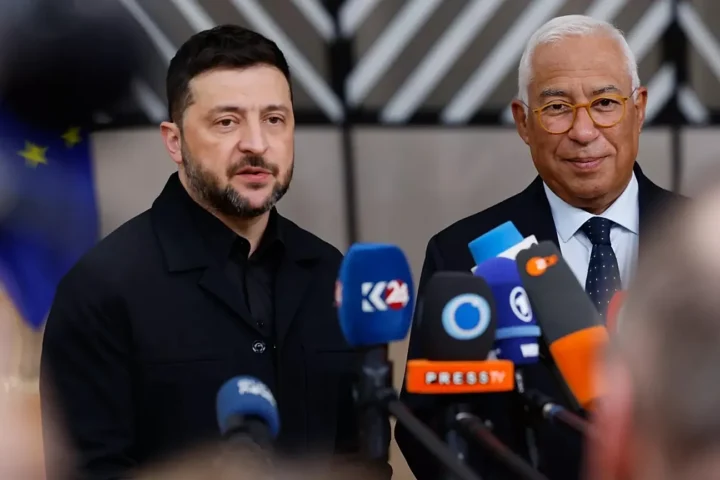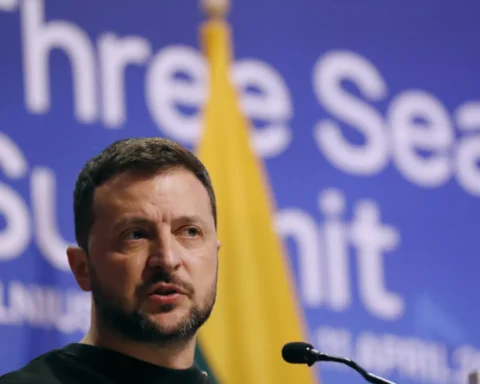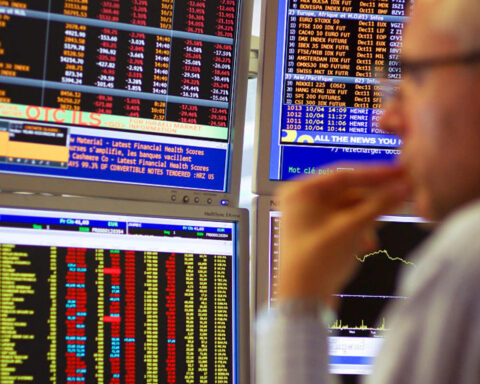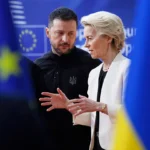As the war in Ukraine grinds into its third year, one of the most striking evolutions on the battlefield is not happening along the trenches of Donetsk or the skies over Kharkiv — it is unfolding hundreds of miles inside Russia. Ukraine’s growing fleet of long-range drones is now hitting refineries, airbases, and infrastructure far beyond the front lines, signaling a new phase in asymmetric warfare that is reshaping both strategy and psychology in Moscow.
What began as a desperate improvisation to counter Russia’s overwhelming firepower has turned into one of Kyiv’s most effective military innovations. Ukrainian engineers, private tech startups, and the defense ministry have fused ingenuity with necessity to develop homegrown unmanned aerial vehicles (UAVs) capable of flying over 1,000 kilometers — a range once thought impossible without foreign-supplied hardware.
Today, these drones are doing what missiles cannot: striking deep into Russian territory at scale, low cost, and minimal risk to human life.
From Survival to Strategic Offense
When Russia invaded Ukraine in February 2022, Kyiv’s drone capability was largely limited to short-range surveillance units and a handful of Turkish Bayraktar TB2 combat drones. But as Western arms deliveries focused on ground-based defense systems, Ukraine faced a critical gap — how to hit back across the border without violating restrictions on using NATO-supplied weapons inside Russia.
The answer was found not in foreign arsenals, but in Ukraine’s own workshops and laboratories.
Within months, the country’s defense industry — supported by a growing ecosystem of civilian drone manufacturers — began repurposing commercial components and experimenting with long-range models. By 2023, Ukraine had operationalized several indigenous systems, including the Beaver, UJ-22 Airborne, and Lyutyi drones, capable of carrying warheads up to 75 kilograms and flying hundreds of kilometers under radar.
In 2024, Kyiv unveiled its most ambitious model yet — a jet-powered drone capable of reaching targets over 1,200 kilometers away, effectively placing Moscow, St. Petersburg, and key oil facilities within striking distance.
Targeting Russia’s Economic Arteries
Ukraine’s drone strategy is as much about psychological warfare and economic attrition as it is about battlefield tactics. While Russia has attempted to maintain a sense of invulnerability within its borders, drone strikes have repeatedly pierced that illusion.
Over the past year, Ukrainian drones have struck oil depots in Ryazan and Tuapse, airfields near Pskov and Engels, and logistics centers deep within the Tatarstan region. The attacks have disrupted fuel supplies, grounded aircraft, and forced the Kremlin to deploy additional air defense systems across vast stretches of the country — a logistical nightmare for Moscow.
“Every refinery that goes up in flames is not just a military blow — it’s an economic message,” said a senior Ukrainian defense official. “We are bringing the cost of this war home to Russia.”
The drone campaign has also exposed gaps in Russia’s air defense network, which was designed primarily to protect against ballistic missiles, not small, low-flying UAVs. Russian Telegram channels frequently light up with footage of fiery explosions in the night sky, followed by debates over whether the Kremlin is doing enough to protect its citizens.
A War of Innovation and Endurance
What sets Ukraine’s drone program apart is its blend of military pragmatism and startup culture. Many of the drones in operation today are the result of partnerships between the Ukrainian Ministry of Digital Transformation and private manufacturers like Ukroboronprom and smaller, agile tech firms.
This hybrid ecosystem has enabled rapid prototyping and iteration, with new models entering service every few months. Engineers often test designs in real combat environments, collecting data and feedback from pilots on the front lines.
“We’re not just fighting a war — we’re running the world’s largest defense R&D lab,” said Mykhailo Fedorov, Ukraine’s Minister of Digital Transformation.
The emphasis on cost efficiency has also given Ukraine a strategic edge. A single long-range drone costs a fraction of a cruise missile, meaning Kyiv can sustain a campaign of repeated strikes without exhausting its budget or supplies.
In contrast, each Russian missile interception — often involving high-end air defense systems like the S-400 — costs millions. The cost asymmetry is beginning to tilt the war’s economic dynamics.
Russia’s Response and Rising Tensions
Moscow has condemned the strikes as acts of terrorism and vowed retaliation. In response, Russia has ramped up electronic warfare systems, improved radar coverage, and intensified its own drone and missile strikes on Ukrainian cities.
However, Ukrainian drones continue to slip through — often flying at low altitudes, following rivers or terrain contours to evade detection. Russia’s ability to stop them remains limited.
The strikes have also begun to challenge domestic perceptions within Russia. For many Russians, the war once felt distant — something happening across the border. Now, the sound of air raid sirens in cities like Belgorod or Kursk has become part of daily life.
“The psychological impact cannot be overstated,” said a European defense analyst. “Ukraine has succeeded in showing ordinary Russians that this war has consequences at home.”
Western Support — and Strategic Ambiguity
While Western allies have refrained from supplying long-range weapons for strikes inside Russia, they have quietly supported Ukraine’s domestic drone programs through funding, intelligence, and materials.
The U.S. and European nations have largely maintained “strategic ambiguity” — allowing Ukraine to innovate independently while avoiding direct complicity in cross-border attacks. This balance enables Kyiv to maintain pressure on Russian targets without provoking escalation with NATO.
Still, some analysts believe the West may soon have to reassess its role, especially as Ukraine’s capabilities expand. If Ukrainian drones begin to target infrastructure closer to Moscow or strategic military command centers, the geopolitical implications could intensify.
The Future of Drone Warfare
Ukraine’s long-range drone campaign has become a blueprint for modern asymmetric warfare. By leveraging low-cost, high-impact technology, Kyiv has demonstrated that even a smaller nation can challenge a larger adversary’s strategic depth.
Military observers believe that 2025 will mark a new stage in the drone war, as both sides deploy AI-enhanced systems, swarm technologies, and autonomous navigation. Ukraine’s defense sector is already testing coordinated drone attacks capable of overwhelming Russian defenses through sheer numbers and unpredictability.
“Drones are not the future — they are the present,” said Colonel Oleksandr Shtupun, a Ukrainian military spokesperson. “And whoever masters them first will shape the next decade of warfare.”
Conclusion: Turning the Tide Through Technology
Ukraine’s long-range drones have done more than strike Russian soil — they have shifted the psychological and technological balance of the war. What began as an act of necessity has evolved into a strategic doctrine that redefines how smaller nations can resist aggression in the 21st century.
As Kyiv continues to innovate and Moscow scrambles to adapt, one thing is clear: the age of drone warfare has arrived, and Ukraine is at its forefront.
Whether these flying machines can ultimately change the outcome of the war remains uncertain. But in the skies above Russia’s heartland, they have already changed its meaning — proving that in modern warfare, distance no longer guarantees safety, and innovation can be as powerful as firepower.



